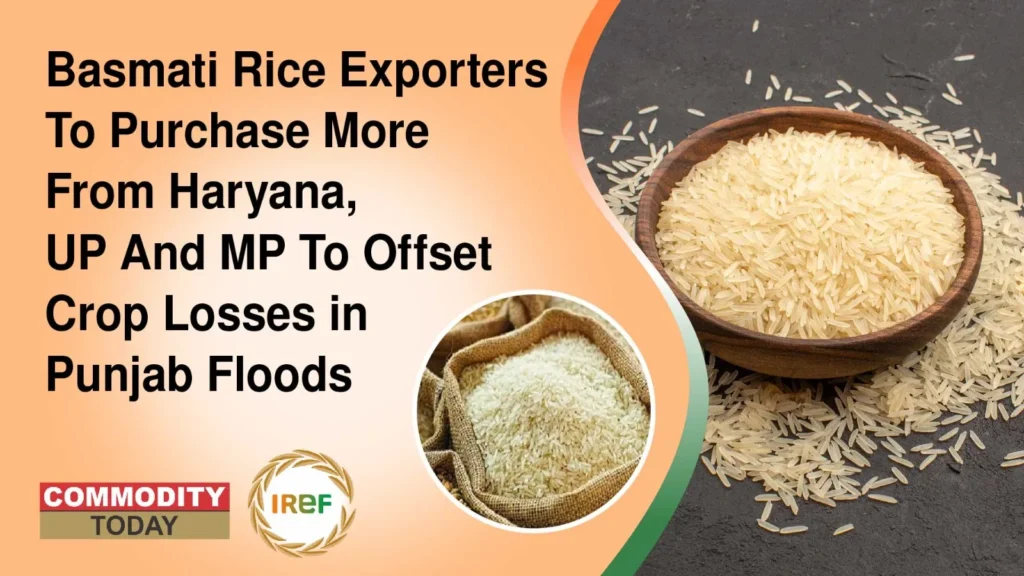Basmati rice exporters are seeking to purchase more from Haryana, UP and MP to offset crop losses in Punjab floods, as millers expect higher overseas demand this year. According to AIREA, Punjab and Haryana, the largest producers of long–grain rice, actually account for around 75% of the country’s total long-grain rice output. India is expected to export 6.5 million tonnes (mt) of basmati rice in the current fiscal year, rising from 6.06 mt worth $5.94 billion shipped out in 2024-25.
What did the President of AIREA say about the Punjab Floods?
Satish Goel, the President of AIREA, said that preliminary estimates suggest that the quantum of damage in Punjab is around 10-15%, which can be compensated by Haryana and Uttar Pradesh, which are reporting good yields. Queries emailed to the Ministry of Agriculture and farmers’ welfare and Agricultural and Processed Food Products Export Development Authority (APEDA) regarding the crop damage and export prospects for the current fiscal year remained unanswered.
Punjab floods 2025: Increased crop-related Challenges
Amit Goel, founder & group managing director, KNAM Group, one of the basmati exporters, stated that the floods in Punjab and Haryana have increased some crop-related challenges, apart from affecting ordinary lives in the region. No doubt, the crop loss is difficult to ascertain at the moment, but exporters have started formulating plans to boost procurement from Haryana, Uttar Pradesh and Madhya Pradesh to compensate for the damage.
Punjab has witnessed the worst floods in decades as relentless rainfall and swollen rivers have submerged villages, towns, and farmlands, affecting over 2.56 lakh people. The sutlej, beas, and Ravi rivers surged, inundating large areas and damaging over 2.3 lakh acres of farmland, and devastating the paddy crop of the kharif season. Undeniably, the Punjab floods have reminded the 1988 deluge, when the water level in the villages had gone up to 12 feet. It had left people stranded on terraces and trees.



